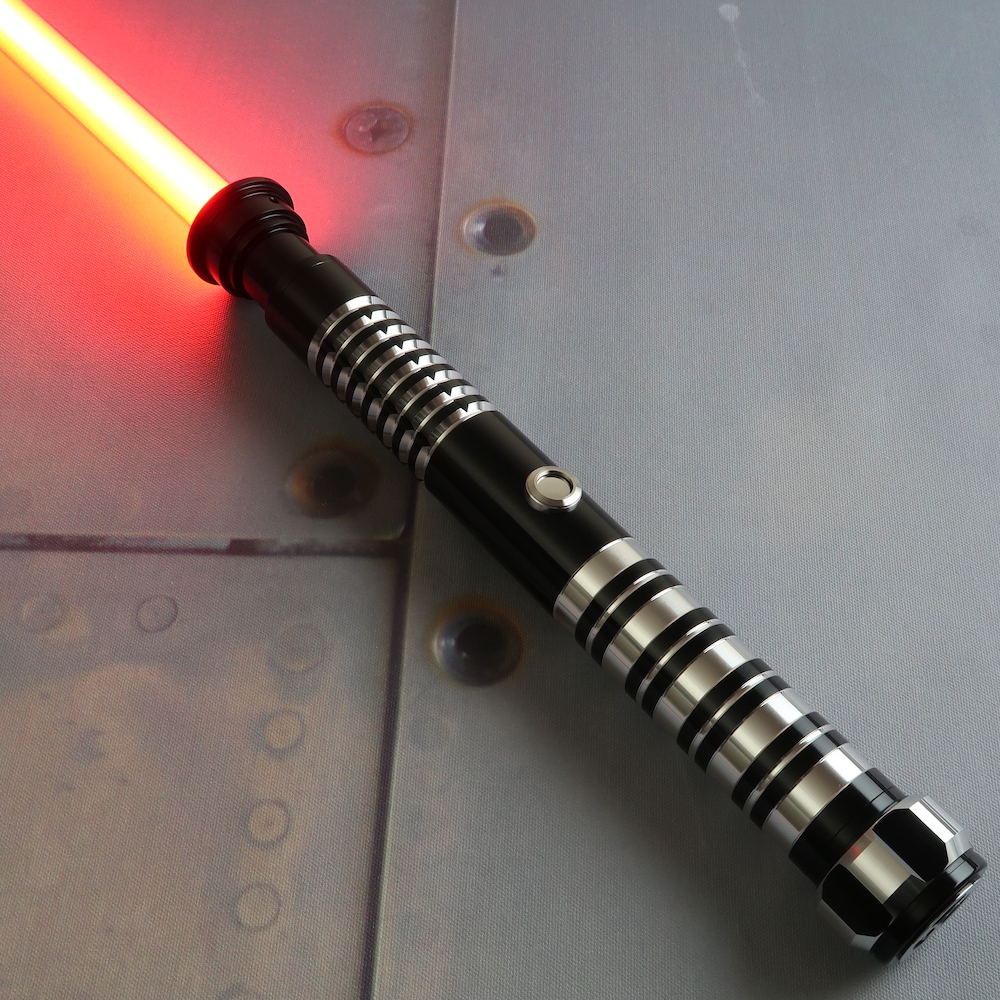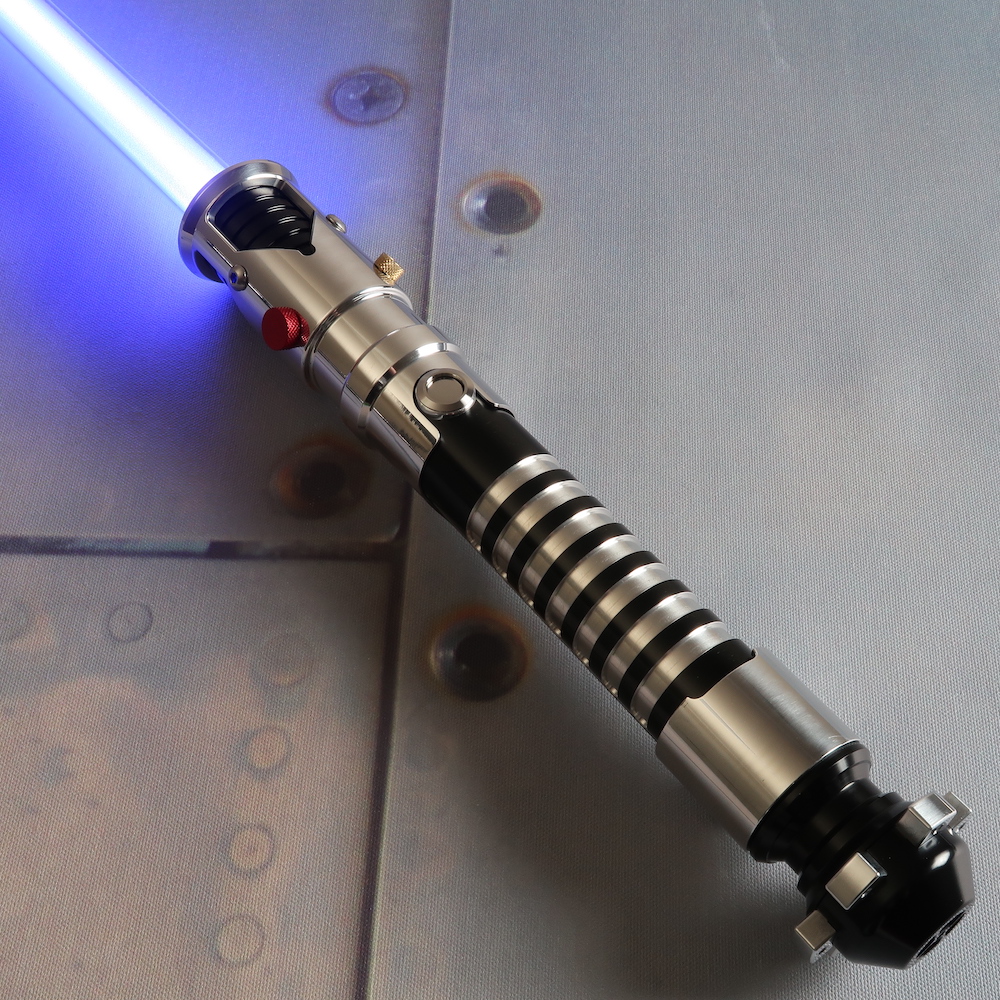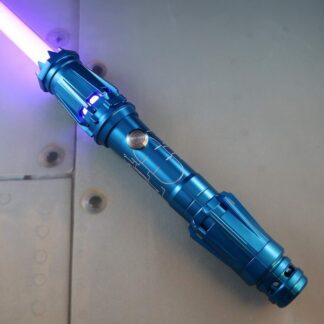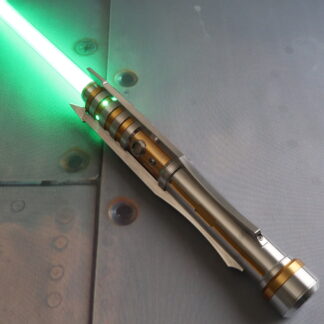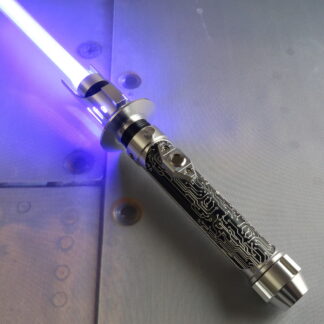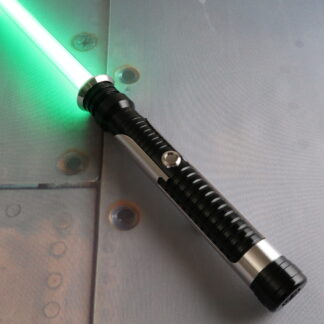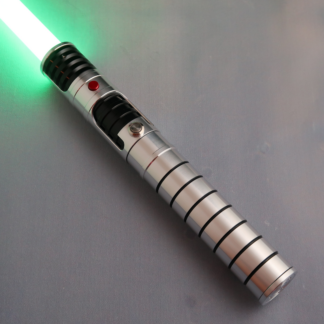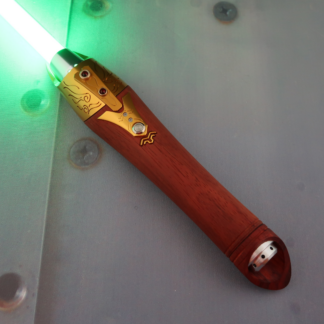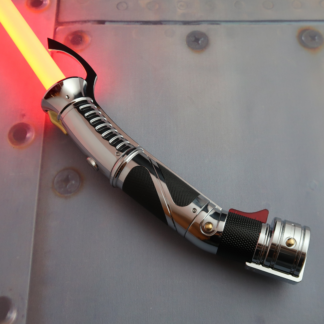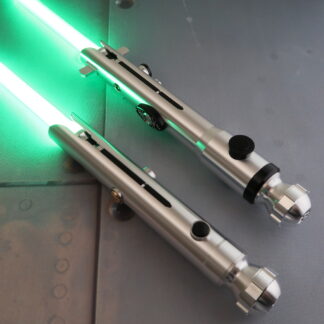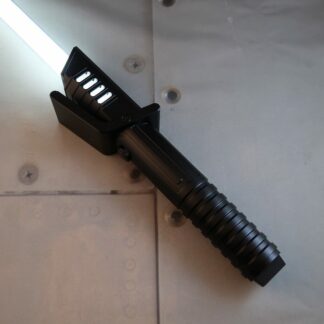A Deeper Look at Lightsaber Form II: Makashi Combat Style
One of the most impressive styles to witness in the history of saber combat, Lightsaber Form II: Makashi, was explicitly developed for one-on-one lightsaber duels, prioritizing precision, timing, and finesse. The first lightsaber combat form was Shii-Cho, which arose in the era before sabers were widely disseminated throughout the galaxy. At the time, lightsaber wielders usually faced opponents armed with more primitive weapons, resulting in largely one-sided skirmishes. As such, Shii-Cho was not designed for head-to-head lightsaber battles.
However, as lightsabers gained far-reaching recognition as powerful combat gear, one-on-one clashes between saber-wielding Force users became increasingly more common. Shii-Cho proved inadequate for this new form of combat, prompting the development of Lightsaber Form 2/II: Makashi. Of all lightsaber combat forms, Makashi is the most elegant and efficient style for precision-based saber dueling.
Makashi lightsaber form—which is, according to Legends, also called the Way of the Ysalamiri, or The Contention Form—is intended specifically for lightsaber-versus-lightsaber encounters. Its renowned practitioners include Count Dooku, who exemplified its refined elegance, and Asajj Ventress, who incorporated it into her acrobatic dual-saber technique. But that’s not all. Learn more about famous users lower on the page!
Master The Makashi Lightsaber Form With a Custom Saber
Makashi Form Areas of Emphasis & Strengths
The specific maneuvers in lightsaber combat are what set each form apart. Unlike Shii-Cho, which depends largely on the lightsaber’s inherent superiority over other types of battlefield implements, the Makashi lightsaber form emphasizes skill over brute power. It assumes that the opponent not only has a lightsaber but also knows how to wield it with a reasonable degree of proficiency. As Count Dooku’s lightsaber form of choice, Makashi requires mastery of multiple combat skills, including:
Economy of Movement
Star Wars’ Makashi form demands precision in footwork and swordplay. To fight in the Makashi style is to expend as little energy as possible. This explains the Makashi expert’s distinctively elegant, “dance-like” motions, which are not only efficient but also psychologically intimidating, projecting control and superiority.
Balance of Offense & Defense
The Makashi practitioner attacks when possible and defends when necessary. The Makashi stance involves skilled footwork, which allows them to maintain optimal range, avoid disarmament, and exploit openings. Feints and blade manipulation are central to the form, used to confuse and outmaneuver an opponent.
Tactical analysis
Form 2 lightsaber combat places a high value on reading an opponent’s strategy. A Makashi duelist continuously studies movement patterns and timing, using insights to produce precise, exploitative strikes. This analytical mindset is part of what made Makashi Star Wars’ most intellectual style.
Lightsabers To Use With Makashi
Shortcomings of Makashi Lightsaber Form
The strength of Makashi—its exclusive focus on head-to-head lightsaber duels—became a weakness when blasters started gaining currency throughout the galaxy. Makashi was never meant to provide an effective defense against ranged weaponry. Furthermore, Makashi tended to be ineffective against multiple opponents, as its refined movements and linear focus leave little room for crowd control. It also lacks the kinetic counters and wide-angle defenses found in forms like Form III: Soresu or Shii-Cho, making it a poor choice in unpredictable battlefields. This does not mean, however, that Form II lightsaber moves ever became obsolete. This popular fighting form remains extremely useful in battles against a single saber-wielding opponent.
Legacy & Famous Users of Lightsaber Form 2/II
Makashi’s reputation as the definitive Form II lightsaber style stems from its elegance, control, and effectiveness in one-on-one duels. Though it has fallen out of favor in modern Jedi training due to its limitations against blasters and multiple enemies, it remains a respected discipline among lightsaber purists, including:
- Asajj Ventress: Mentioned earlier as a popular practitioner of this form, Asajj is one of the most fascinating and skilled fighters. Trained by Dooku, Ventress adopted Makashi as the foundation of her own dual-saber style. While she lacked her master’s finesse, her aggressive variation proved deadly in battle.
- Count Dooku: Known as Darth Tyranus after his fall to the Dark Side, Makashi is Count Dooku’s lightsaber form, using it to vanquish Jedi and those who oppose the rise of the Sith. Count Dooku was widely regarded as the greatest Makashi master of his time. His fencing-inspired Makashi stance, curved-hilt saber, and calculated strikes gave him a dueling edge against even the most formidable Jedi.
- Luminara Unduli: Though primarily a Soresu user, Luminara would employ Makashi during formal duels where elegance and accuracy were key to subduing an opponent without excessive aggression.
- Qui-Gon Jinn: Dooku’s former Padawan, Qui-Gon Jinn, who predominantly uses Form IV: Ataru, was familiar with Form II lightsaber combat and integrated Makashi principles into his own, more fluid and intuitive fighting style.
- Shaak Ti: A Jedi Master known for her discipline and patience, Shaak Ti incorporated Makashi lightsaber form techniques to maintain precision and calm in the face of chaos.
Together, these Force users showcased Makashi’s stance, skills, and enduring value, even when overshadowed by more aggressive, acrobatic, or martial-arts-inspired styles. Learn how Makashi compares to other lightsaber forms in our guide, What Your Lightsaber Form Says About You.
Character-Inspired Custom Lightsabers
Create Your Own Lightsaber & Join The Community
For more information on lightsaber duels and other aspects of the Star Wars universe, visit Ultrasabers’ official discussion forum at SaberForum.com. And feel free to contact Ultrasabers with your questions about combat-ready lightsabers, saber accessories, or building a custom lightsaber that best fits your fighting style.


